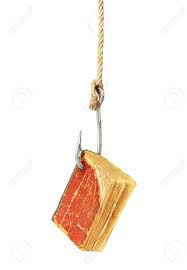Writing with Notecards and Mindmaps
- Author Bruce Shields

- Sep 20, 2022
- 3 min read

As I prepare everything for finishing Losing Dani Strumm, I gather all my materials and realize I need more colored note cards. These and my mind maps are essential to organizing a storyline.
I remember when I began writing Pandemic Dawn Book I and realized I had multiple storylines and needed a way to organize the book. Colored note cards were the secret!
More than that, my mind maps help with the creation and later with keeping track of the characters and what and who they know.
You may not think much about it
but when you have as many characters as I do in the four Pandemic Dawn novels, you need a way to track who knows who and who knows what because all of it is in your head, and it can be easy to forget.
In an early manuscript of Book II, I had a character talk about a person they had never been introduced to or had any contact with. Thankfully I caught it on one of my many read-throughs.
One of the things I do is keep notes on all the characters. A line is drawn from one character to the other whenever they meet someone—a different color for friend, foe, or love interest, which helps me keep track.

With six storylines running consecutively and crossing back and forth within each other, I know no better way to track this than using colored notecards.
I will write step-by-step guides when I write my next book to illustrate exactly how I do it, but basically, I first write a short synopsis of my story idea. Then I draw my mind map of ideas, characters, conflicts, etc. Next, I reread the summary and organize the mind map into sections depending on the story arc I decide to use.
I wrote an article a while back about story arcs, character arcs, and the different types, be sure to check that out.
When writing with multiple storylines, as I do, the overall book has an arc, each of the six storylines has arcs, and each character (primary and sometimes secondary) has arcs.
It sounds far more complicated than it is
You know the characters, who they are, and what you want them to achieve in the story. Everyone has a beginning, incidents that question motivation, action with their decision, the climax of conflict, either success or failure, acceptance or denial, and resolution.
Most of this is all decided when I create the character. Then, as things happen or they make choices, I keep notes on the back of the notecard for that character. As a result, some characters have multiple notecards filled with information.

When I have multiple storylines, I like to make a pile for each, with the beginning of each storyline on the top and the resolution on the bottom. Then, I begin with the main storyline and take a card from each storyline in order over and over until no cards are left. Doing this, I have just created the book chapter order.
I like doing it this way because it keeps things fresh as you go from one storyline to the next, all the way around to the first again. Then, my last chapter is a short paragraph or two closing out each storyline. Then, if there is another book in the series, I use this final chapter as the starting point for the following book's storylines, which is how I structured the Pandemic Dawn Series.
I should probably create a specific blog section for my process to help others. It would make it easier to have an actual how-to.
Well, it is time to get ready for my meeting this morning. Have an inspirational day, and create some mind maps!






Comments